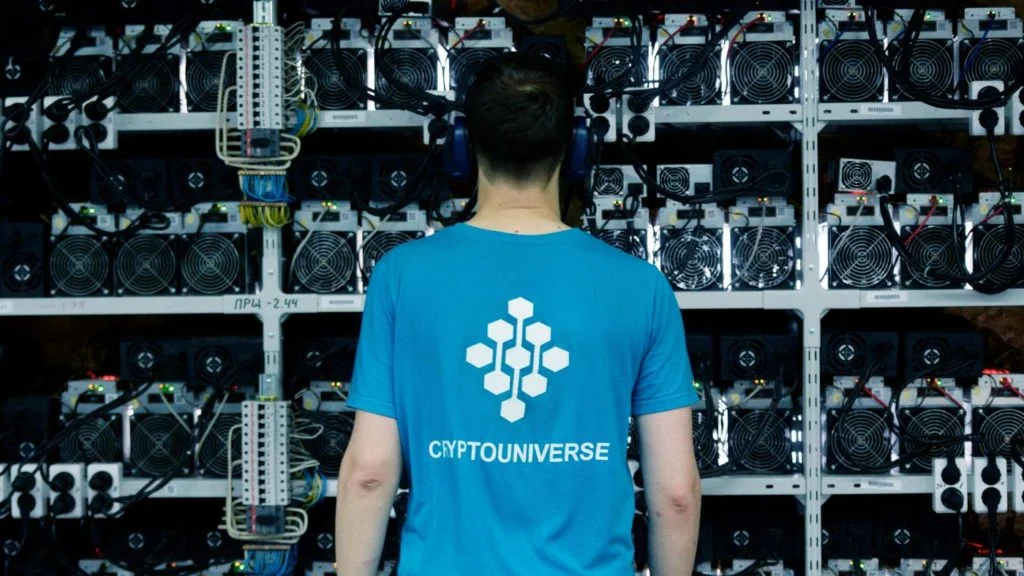
We’re all familiar with the story of Bitcoin’s meteoric rise since early January, or at least we think we are. Skyrocketing value spurred by an anti-establishment ethos, speculative excitement and celebrity endorsements – all seemingly vindicated by increased corporate backing.
We’re less familiar with other side of the coin however – its environmental cost. The cryptocurrency has for years alarmed experts due to the sheer level of energy required by so-called ‘miners’, who run purpose-built computers which compete to solve complex maths puzzles in order to make a transaction go through.
All of this consumes a phenomenal amount of energy which necessarily increases along with the value of the currency. The more successful bitcoin gets, the higher the price goes. This increases the competition for Bitcoin and more energy is expended on the mining process.
Bitcoin has a carbon footprint comparable to that of New Zealand, producing 36.95 megatons of CO2 annually, according to Digiconomist’s Bitcoin Energy Consumption Index, and consumes as much power as Chile – around 77.78 TWh.
The Cambridge Bitcoin Electricity Consumption Index, a separate tool from researchers at Cambridge University, shows a much larger figure of 110.53 TWh – more than the entire annual energy consumption of the Netherlands. This accounts for around 0.5% of total global electricity consumption, according to their estimates.
Yet this isn’t a problem for Bitcoin per se, but for all blockchain technology. With the rise of digital currencies showing no signs of abating, and the prospect of Central Bank Digital Currencies (CBDC) looking increasingly realistic in a number of countries – including China – we need to prioritise making blockchain greener.
With climate set to remain at the top of the global political agenda, we are likely to see increased demand for carbon-neutral digital currencies, while ‘dirty’ digital currencies will seek to incorporate carbon offsetting products into their offers.
The value of carbon credits is therefore likely to rise with the tide of cryptocurrencies. A perfect match, one might think? The only problem is that the carbon credit market somewhat lumbers behind the crypto market in its efficiency.
Carbon credits were created as an incentive for businesses and governments to adopt carbon-friendly business practices, with the aim of becoming the mechanism though which to balance the world’s carbon footprint. While it has grown to become a $52bn market, it has evolved to become limited by intermediaries. This results in a lack of market access for carbon credits.
As it stands the market suffers from three deficiencies.
Firstly, there is a lack of public awareness. Carbon credits remain largely unknown to the public as a solution to combat climate change. In addition, for those who are aware of it, access to channels to participate or purchase carbon credits is complex and opaque.
Secondly, it is highly centralised. The demand-side of carbon market is largely dominated by brokers and funds. Project developers often have to rely on having relationships with these intermediaries to promote their project to end-buyers.
Thirdly, there is lack of transparency and accountability to track the sources of carbon credits bought.
Thankfully a range of innovative solutions are in development. A company called Carbon Grid Protocol (CGRID) seeks to solve these problems by introducing tradable carbon credits backed by crypto-economic incentives to the blockchain ecosystem.
CGRID has designed a complementary protocol layer enabling blockchain networks and decentralised apps (Dapps) to efficiently access carbon credits to offset their carbon footprint. The use of the distributed ledger will solve the accountability problem by helping provide the layer of provenance needed in the market. The ultimate goal is to promote the widespread adoption of carbon credits in blockchain as a valuable and readily tradable asset class.
A number of other companies are developing crypto tokens representing tradeable carbon credits on a blockchain ledger. Regen Network is a decentralised carbon credit blockchain that helps land stewards sell ecosystem services like carbon sequestration, soil health, water quality and biodiversity directly to buyers anywhere in the world. Just as blockchain technology fosters trust in cryptocurrencies, it can also foster trust in the scientific data that is the foundation of any successful carbon credit system.
It is clear that cryptocurrencies and blockchain technology offer so much more than gas-guzzling Bitcoin and that many people are justifiably excited about the possibilities of a decentralised ‘ecosystem of money’. In addition to making a fast buck with the Bitcoin bubble, we should be shifting our focus towards exploring proof of stake cryptocurrencies and investing in community-driven projects that also help heal the planet.
Read the article here: https://capx.co/a-virtuous-blockchain-why-carbon-credits-could-be-the-new-bitcoins/

